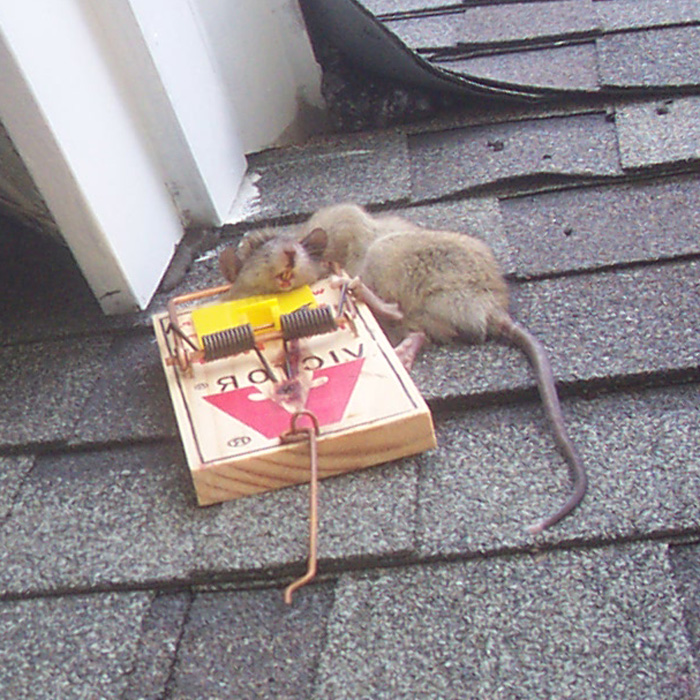- USA Wildlife Removal Education Guide and Resources
Rat on the Roof

Removing Rats On Your Roof - Although they may not appear to be natural climbers, with quite heavy bodies and long tails, there are many species of rats that are really quite competent climbers, and can deal with climbing a wall or drain pipe as well as they can climb a tree trunk. Rats on the roof is never a good sign, and while they may not be as noisy or as easy to spot as raccoons or larger animals, spotting a rat on the roof is definitely a sign to be concerned about. Getting rid of the animals can be quite a challenge, particularly if the roof and the attic space inside is difficult or awkward to get to, but it is something that needs to be dealt with.
Preparing To Investigate A Rat Problem
The first step to carry out is to identify whether or not the rats are on the roof and getting into the attic, or whether they are just on the roof looking for food or for other reasons. The first thing to do is to get your equipment ready, and this should include a breathing mask and goggles if you are going into a confined area, along with protective clothing that will withstand a scratch or bite from a rat, with thick gloves particularly important as bites and scratches around the hands are quite common. It is also worth looking at images of rat droppings, as the animals themselves will often disappear when they hear people coming, but the small brown pellet shaped droppings can be indicators of the presence of rats.
Why Do Rats Go On The Roof?
Rats will usually view high places as a location of safety, as the majority of predators that these animals will have are rarely good climbers because they will need to be quite large animals. While some rats will be escaping predators, the majority of rats on the roof will be there because they have found, or are looking for a good place to nest where they can give birth to their latest litter and raise their young. This certainly isn't something that you will want to happen, as one female rat can give birth to up to forty baby rats every year, and because they have adapted to live alongside people, they don't have one mating season but can give birth throughout the year.
Identifying Whether Or Not the Rats Are Also In The Attic
Taking the normal precautions before going into an area where rats may be, identifying whether the rats are present in the attic or not is usually straightforward, as they are not animals that hide their presence. Signs of a rat infestation will include streaks of brown grease around the base of walls where they are active, along with lots of droppings around half an inch in length, while rats are also likely to have soiled insulation and caused other problems that will need to be resolved.
Trapping The Rats
If you are looking to catch the rats causing the problems, snap traps are the most common method of dealing with an infestation, and are the most effective way of solving the issue. If the rats have got into the attic, you may need several traps, and look to set these around the entry holes into the attic, and in high traffic areas with signs of the rat using the area regularly. For those who are lucky not to have rats in the attic, you can place the traps on the roof tiles, but look to affix them to ensure they do not get washed away by rain and wind.
Dealing With The Carcasses
Once you have caught the rats, it is important not to treat them recklessly, and they should be disposed of in a way that will ensure there is no risk of disease transmission. You should check with your local wildlife department to see if there are particular guidelines applicable in terms of dealing with the carcass, but if not the carcass can be placed in a sealed container or double bagged garbage back before being put out with the trash.
Preventing Rats From Getting On The Roof In Future
This is the most important step when it comes to ensuring that you don't encounter the same rat problem in the future, but it is also one are which is often ignored once the rats have been trapped and removed. These sneaky animals can get into the attic through holes that are less than two inches in diameter, so it is important to examine the attic carefully and to seal any holes securely. Make sure that any food or cover on the roof is removed, while rats are also attracted to fruit trees, so make sure that any branches are not overhanging the roof, otherwise the rats can use those to get on to the roof again.
Go back to the main Rat Removal page for more information about rat on the roof, and what types of noises or sounds they make. Do you hear the rat on the roof during the night or the day?

